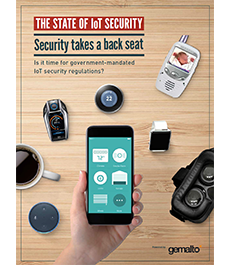Billions of new Internet of Things (IoT) devices are expected before 2020[ but the majority of these do not require the full capabilities of 4G cellular networks. Emerging Low-Power Wide-Area wireless technologies, including LTE-M and NB-IoT, allow devices to connect to existing 4G networks.
Gemalto’s LTE Cat M1 IoT module is now certified by Verizon. With very low power consumption, these new modules will expand the use of cellular connections in applications such as security systems, points of sale, vending and eHealth solutions.
The Cinterion IoT module is compatible with Gemalto’s embedded SIM (eSIM). Integrating an eSIM inside the module streamlines the process of connecting with confidence and simplifies solution design by combining two components into one. In addition, this module supports remote device updates and quality of service management over the lifetime of the device.
The module features a proprietary solution for exceptionally quick wake-up times that are 15 times faster than traditional solutions. This preserves power and improves responsiveness, which are essential elements for power sensitive, battery-operated IoT applications.
“The Cinterion LTE-M platform blends efficient connectivity and streamlined design to enable and accelerate new IoT applications and improve Total Cost of Ownership,” said Andreas Haegele, SVP IoT Products, Gemalto. “With decades of experience in provisioning services and more than 50 global MNO references for On-Demand Connectivity, Gemalto is in the lead position to help drive adoption and transform the way IoT technology is deployed in the future.”
Gemalto also revealed this week that 90 percent of consumers lack confidence in the security of IoT devices. This comes as more than two-thirds of consumers and almost 80 percent of organizations support governments getting involved in setting IoT security.
According to the survey, businesses are in favor of regulations to make it clear who is responsible for securing IoT devices and data at each stage of its journey (61 percent) and the implications of non- compliance (55 percent). In fact, almost every organization (96 percent) and consumer (90 percent) is looking for government-enforced IoT security regulation.

Consumers’ main fear (cited by two thirds of respondents) is hackers taking control of their device. In fact, this was more of a concern than their data being leaked (60 percent) and hackers accessing their personal information (54 percent).
Despite more than half (54 percent) of consumers owning an IoT device (on average two), around 14 percent believe that they are extremely knowledgeable when it comes to the security of these devices, showing education is needed among both consumers and businesses.
In terms of the level of investment in security, the survey found that IoT device manufacturers and service providers spend about 11 percent of their total IoT budget on securing their IoT devices. The study found that these companies do recognize the importance of protecting devices and the data they generate or transfer with 50 percent of companies adopting a security by design approach.
Two-thirds (67 percent) of organizations report encryption as their main method of securing IoT assets with 62 percent encrypting the data as soon as it reaches their IoT device, while 59 percent as it leaves the device. Ninety two percent of companies also see an increase in sales or product usage after implementing IoT security measures.




